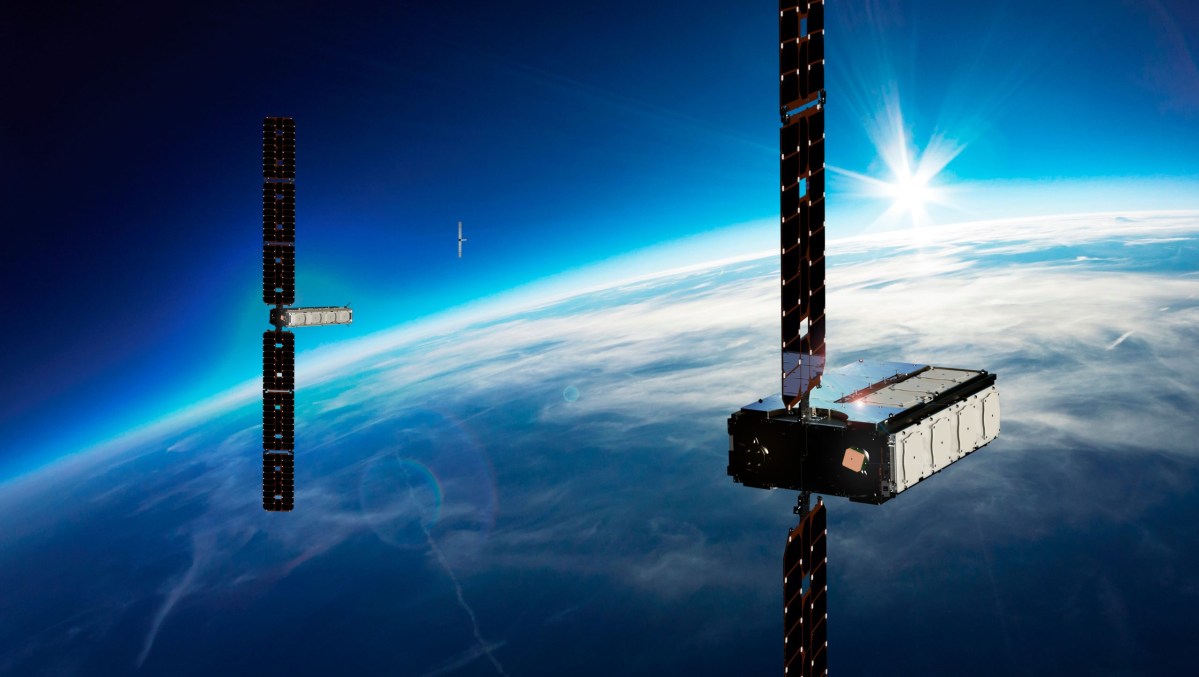TAMPA, Fla. — GomSpace, a Danish smallsat maker, announced plans April 8 to integrate space traffic management (STM) tools from Portugal’s Neuraspace into its satellite operations platform to help avoid collisions in increasingly congested orbits.
The partnership combines Neuraspace’s artificial intelligence-driven satellite tracking capabilities with GomSpace’s Hands-Off Operations Platform (HOOP), designed to automate spacecraft management tasks from pre-launch preparations through to decommissioning.
“In practice, any maneuver that a HOOP user is planning can be screened against potential conjunctions/collisions in one go,” Neuraspace CEO Chiara Manfletti said via email.
Neuraspace combines data from public catalogs, partnerships with ground-based telescope providers and its own sensor infrastructure to deliver real-time satellite tracking information.
HOOP users would receive automated conjunction alerts and optimized collision-avoidance maneuver recommendations as part of their service from GomSpace, which has built more than 75 spacecraft since it was founded in 2007 and delivered over 10,000 satellite subsystems.
The companies say this level of automation would reduce manual workload and operational costs, including fuel savings from executing fewer and more efficient maneuvers.
“What makes the collaboration with GomSpace and its HOOP platform particularly significant is the depth and native nature of the integration,” Manfletti said.
“This is not just about connecting systems — it’s about embedding Neuraspace’s AI-powered STM capabilities directly into HOOP’s end-to-end automation environment.”
Operators could use Neuraspace’s STM service and a platform such as HOOP separately, but would then need to manually switch between systems, export data or synchronize maneuver plans.
“This tight integration simplifies daily operations, reduces human error and saves both time and cost,” she added.
Eyes on the skies
As the number of satellites in Earth’s orbit continues to grow rapidly, driven by Starlink and other massive broadband constellations, so does the risk of collisions and the creation of orbital debris. This accumulation risks triggering a Kessler Syndrome scenario, where cascading collisions make certain orbital regions unusable for generations.
According to the European Space Agency, there are currently more than 34,000 objects larger than 10 centimeters orbiting Earth, and the number is expected to increase significantly in the coming years.
Today, most satellite operators rely on a patchwork of manual processes, fragmented data sources, public dashboards, basic screening utilities and legacy tools such as the U.S. Space Force’s Space-Track Conjunction Data Messages (CDMs) to monitor potential conjunctions and make avoidance decisions.
“This typically involves time-consuming analysis by mission operators and often lacks the accuracy or responsiveness needed to act early and efficiently,” Manfletti said.
Multiple STM ventures have entered the market to address these challenges, ranging from terrestrial sensor providers such as Leolabs to NorthStar Earth & Space, which is developing a satellite-tracking system in orbit.
According to Neuraspace, its artificial intelligence-driven approach combining data from multiple sources cuts conjunction screening times to less than an hour — significantly faster than the four to eight hours typical of legacy methods.
Integrating its tools with other software platforms will help make collision avoidance a more streamlined and automatic part of daily satellite operations, she added, while opening up a new commercial avenue for Neuraspace.

